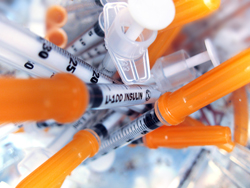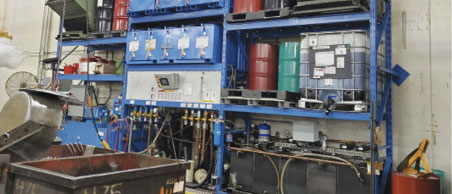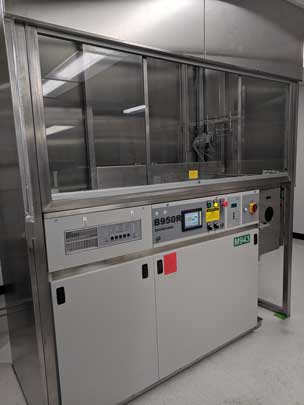March 2022
Inside the Newsletter:
Oil Recovery | TCE Reductions | Kelsey Klucas | Healthcare Resource | Funding Opportunities
Cutting Oil Recovery: Quality = Performance + Savings
MnTAP has been leading a project focused on supporting precision manufacturing and metal fabrication companies with funding from the Minnesota Pollution Control Agency and U. S. EPA Region 5. The first phase of the project, which took place over the course of 2021, was to interview local manufacturers to identify operational best practices that could be shared with the rest of the industry. There was representation across a wide range of company sizes as well, from small to large ends of the scale, but nine of the respondents were small job shops with fewer than 150 employees. Based on these conversations, MnTAP realized that coolant reuse is a high priority in the field.
It is well known in the industry that machining fluid, whether aqueous or oil-based, is an important resource to conserve. Not only is it essential for maintaining cutting tool life and achieving a high quality finish on the machined part, but it can also be expensive since it has to be paid for twice: once during purchasing and once during disposal. One company that has developed an impressive system for recycling cutting oil is Roberts Automatic Products. This precision machining company has been run by three generations of the Roberts family over the last 74 years and is currently located in Chanhassen, Minnesota.
Roberts originally separated lubricant from chips through gravity draining, capturing 80-85% of the cutting oil. They improved the recovery rate to 99% by using a centrifuge to separate the oil, but still disposed of 10,000 gallons per year due to inconsistent oil quality. The quality of the oil was being compromised by mixing of machine lube oil and cutting oil during operations. The company worked with vendors and improved the overall recovery process to generate a high quality oil for reuse as follows:
- Identify a new oil that performed as both a cutting oil and a machine lubricant
- Allow the spent oil to settle in the machine sump
- Pump oil to centralized oil recycling system
- Pass oil through a rough filter to remove large particles
- Pump oil to a centrifuge to remove fine particles
- Filter through 10 to 2 micron filters to recover oil as clean as purchased material
- Check the recovered oil for additive concentrations to get highest quality performance.
This recycling system has allowed Roberts to reduce cutting and lubricating oil disposed as waste by 80% or 8,000 gallons per year, saving $160,000 annually. The best outcome, however, is that clean cutting oil has positive impacts in other areas such as tool life, uptime, and product finish quality.
This article was published in the January/February 2022 issue of MPMA’s Precision Manufacturing Journal, which can be accessed in PDF format on MPMA’s website (p. 18).
For more information about reclaiming cutting oil or the MnTAP project in the metal fabrication industry, contact:
Daniel Chang
Associate Engineer
612-624-0808 or 612-624-1300
dwchang@umn.edu
Let us know about any pollution prevention, water conservation or energy efficiency topics you would like to learn more about in 2022.
TCE Reductions – First Round Implementation!
Project Overview
On June 1, 2022, Minnesota will implement a first-in-the-nation ban on trichloroethylene (TCE) use for all businesses requiring an air permit. MnTAP is committed to helping businesses adjust to this change by finding long term safer solutions through solvent testing and technical assistance. TCE is a hazardous air pollutant (HAP) that can contaminate soil, air, and water. TCE is a known human carcinogen, can affect the liver, kidneys, immune, reproductive, and central nervous systems, and may affect fetal development.
MnTAP has recently completed technical assistance activities supported with funding from the Minnesota Pollution Control Agency and U.S. EPA Region 5 to decrease air emissions of TCE by working with Minnesota industries to replace TCE with safer, effective options while working to avoid regrettable substitutions such as n-propyl bromide (nPB) and trans-1,2-dichloroethylene (tDCE).
Over the course of the project MnTAP worked with four Minnesota companies and our partners at the Toxics Use Reduction Institute Cleaning Laboratory at the University of Massachusetts, Lowell to transition away from TCE use. To date 37,000 lbs of TCE solvent use have been eliminated and replaced with other cleaning options. MnTAP’s work continues with additional facilities to reduce additional TCE use and help businesses meet the June 2022 deadline.
Minnesota’s TCE ban applies to any TCE use at the facility including as an ingredient in commercial products such as aerosol cleaners. Check your maintenance cabinets and Safety Data Sheets! Contact MnTAP if we can help you transition from TCE or any other halogenated solvent to a safer alternative.
For more information or to discuss TCE use at your facility, contact:
Laura Sevcik
Pollution Prevention Specialist
612-624-8192
lsevcik@umn.edu
MnTAP Welcomes Kelsey Klucas!

MnTAP welcomes Kelsey Klucas to our engineering staff!
Kelsey’s main driver is to find ways to make a difference. She is no stranger to the University of Minnesota having received a B.S. degree in Corporate Environmental Management and a M.S. in Environmental Engineering both from UMN. She brings 10 years of professional experience in the industrial sector where she helped create tools and systems to facilitate environmental compliance on a global scale. She’s excited to be able to partner with local companies to help them take steps forward in their own environmental journeys.
Kelsey will be focusing on providing general technical assistance with an emphasis on water related projects. She will be coordinating MnTAP efforts to better understand processes and products where perfluoroalkyl sulfonate (PFAS) materials are incorporated.
New Resource for Healthcare Waste Management
 Cleaning, disinfecting and managing waste in healthcare facilities can be complicated in normal times. Layering on a pandemic with the SARS-CoV-2 pathogen increased the complexity. Initially single use items such as isolation gowns, masks and respirators were called for and disposed of as infectious waste. As the use of personal protective equipment (PPE) increased, so did the amount of waste in many facilities, particularly the waste associated with the care of COVID-19-positive patients.
Cleaning, disinfecting and managing waste in healthcare facilities can be complicated in normal times. Layering on a pandemic with the SARS-CoV-2 pathogen increased the complexity. Initially single use items such as isolation gowns, masks and respirators were called for and disposed of as infectious waste. As the use of personal protective equipment (PPE) increased, so did the amount of waste in many facilities, particularly the waste associated with the care of COVID-19-positive patients.
When making decisions on healthcare waste streams, it is important to make the appropriate determination of waste type to ensure it is properly managed and disposed to avoid exposure risk, environmental releases and excess cost. Improperly disposed hazardous waste can lead to untreated chemicals being discharged to wastewater treatment. Allowing solid waste streams to enter hazardous or infectious waste collection will increase disposal cost due to the high level of treatment required.
A guidance document of healthcare information and best practices to assist healthcare providers in managing the materials and waste streams generated during the diagnosis, treatment and infection prevention activities associated with Covid-19 was generated in partnership with Zimmer Environmental LLC. The original report—Perspectives on Healthcare Waste Management During Covid-19—from which this guidance is excerpted, used literature review of trusted sources and interviews with healthcare personnel working on the front line of the pandemic, to identify best practices for waste management and waste reduction in the healthcare sector during this pandemic and beyond.
See the Full ResourceFunding Opportunities
Dry Cleaner Cost Share Program
Minnesota has banned the use of Perchloroethylene (perc) as a dry-cleaning solvent starting in 2026. This cost-share funding can help your dry-cleaning business switch away from perc.
This dry cleaner cost share funding is now open via a rolling application RFP process. It provides up to $20,000 for projects that eliminate PERC with an alternative dry cleaning product that is technically viable and environmentally preferable. Those intending to decommission a PERC machine with no replacement (a dry facility no longer cleaning on site) are also eligible.
See the application materials on the MPCA website for more details.
Loans for Trichloroethylene (TCE) Reduction
The MPCA has made up to $250,000 in Small Business Environmental Improvement Loans available at zero-percent interest to small businesses for installation and equipment purchases associated with a switch from the use of trichloroethylene (TCE) to an alternative demonstrated to be less toxic.
Qualified borrowers must be an existing small business corporation, sole proprietorship, partnership, or association with less than 500 full-time employees, after-tax profit of less than $500,000, and a demonstrated ability to repay the loan.
See Loans for Trichloroethylene Reduction webpage for eligibility requirements, loan terms, and application form.

